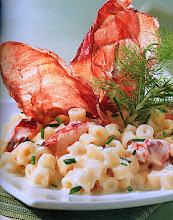
Being one to never skip breakfast, I like to keep the "gravy train" going with a rich tasting plate that doesn't match the caloric and carb intake of last night's 5 slices of pie-fest. So for me, just a simple plate of scrambled eggs (done right) with a little bit of toast and perhaps a little leftover champagne with grapefruit or orange juice keeps the holiday spirit going.
...
...
In my humble opinion, there's just about nothing more rich and flavorful than a perfectly cooked egg.... so my education to this point has taught me to simply, "not ruin it!" I don't like to add a lot of stuff; rather, just enough to highlight the flavor already there. As Thomas Keller says, "Take your time. Take a long time. Move slowly and deliberately and with great attention." I think this is especially true when cooking scrambled eggs. I've developed this technique for making scrambled eggs from numerous sources and recipes and I think I'm satisfied that this may be the best way.
Note: I'm just going to explain my technique so cream can always be substituted for milk and cheddar cheese can replace Havarti, etc. Just go low (heat) and slow and whatever you add or subtract should be fine.
Step 1: In a cool nonstick pan crack 2 eggs per person. Place a small pad of butter onto the eggs, this will melt as you start to stir later on and it will add a nice velvety touch. I also like to put a tablespoon (per 2 eggs) of milk or cream in as well. Don't use any oil or butter in the bottom of the pan because you don't want to saute it!!!
Step 2: Turn the heat onto medium-low and slowly stir the eggs using a plastic cake spatula. Be sure to run the spatula against the bottom of the pan so the egg doesn't start to stick to the bottom.
 Step 3: Keep stirring until the eggs start to coagulate into little lumps. This is going to take a pretty long time. You may feel that the heat is too low, but don't turn it up and don't stir too fast. Eggs are very high in protein and high heat and high protein aren't good dance partners if you want a soft texture.
Step 3: Keep stirring until the eggs start to coagulate into little lumps. This is going to take a pretty long time. You may feel that the heat is too low, but don't turn it up and don't stir too fast. Eggs are very high in protein and high heat and high protein aren't good dance partners if you want a soft texture. Step 4: After a while you will notice that there is very little "liquid" egg left and you are able to push it all to one side of the pan and most of it will generally stay there. This is the point where you are going to season the eggs and add cheese if you want. You want to wait until now to season them because if you do it beforehand, the salt will break down eggs and you wont get the right consistency.
Step 4: After a while you will notice that there is very little "liquid" egg left and you are able to push it all to one side of the pan and most of it will generally stay there. This is the point where you are going to season the eggs and add cheese if you want. You want to wait until now to season them because if you do it beforehand, the salt will break down eggs and you wont get the right consistency. Season with salt (a good sea or kosher salt) and just a little bit of fresh cracked pepper. I also like to put just a little cheese at this point. I like a mild cheese like Havarti or Munster. I find Cheddar a little too sharp for the delicate egg.
Season with salt (a good sea or kosher salt) and just a little bit of fresh cracked pepper. I also like to put just a little cheese at this point. I like a mild cheese like Havarti or Munster. I find Cheddar a little too sharp for the delicate egg. Step 5: Keep moving the eggs around so nothing burns. Once you don't see anymore liquid, immediately plate the eggs. You can also put a little sea salt on top at this point and let it melt ever so slightly. I like to serve it with toast and maybe a side of fruit.
Hopefully you'll like this technique for making scrambled eggs as much as I do. Happy holidays!

Great post! I find that a dash of heavy cream instead of milk gives the eggs an added depth of richness. If you want to add herbs, I love a pinch of thyme in my scrambled eggs!
ReplyDelete